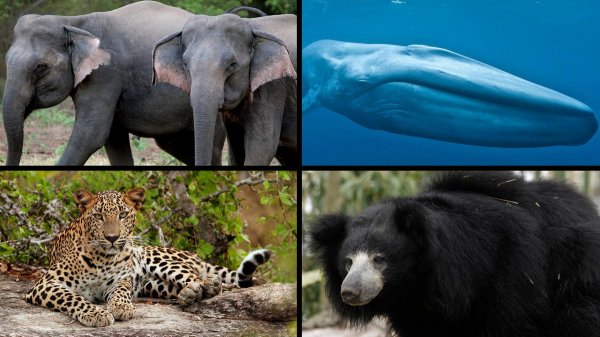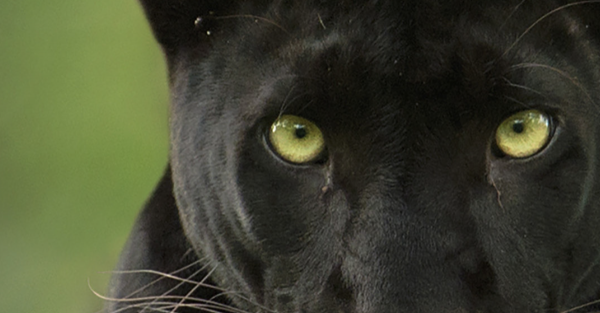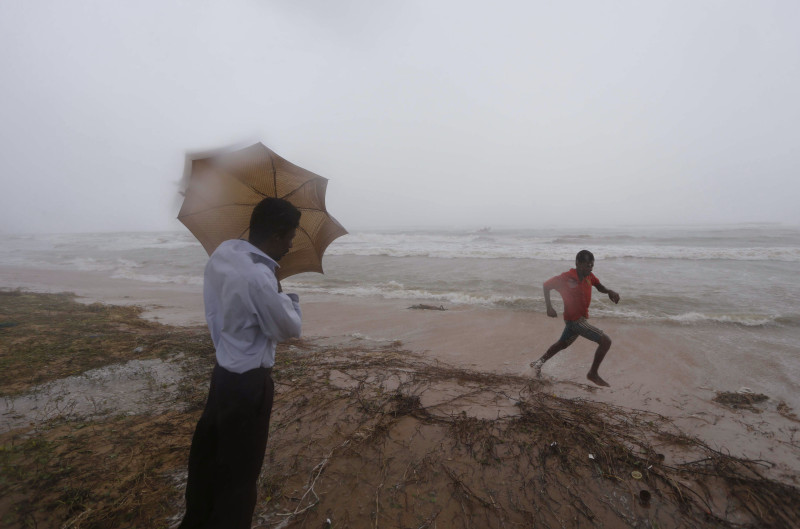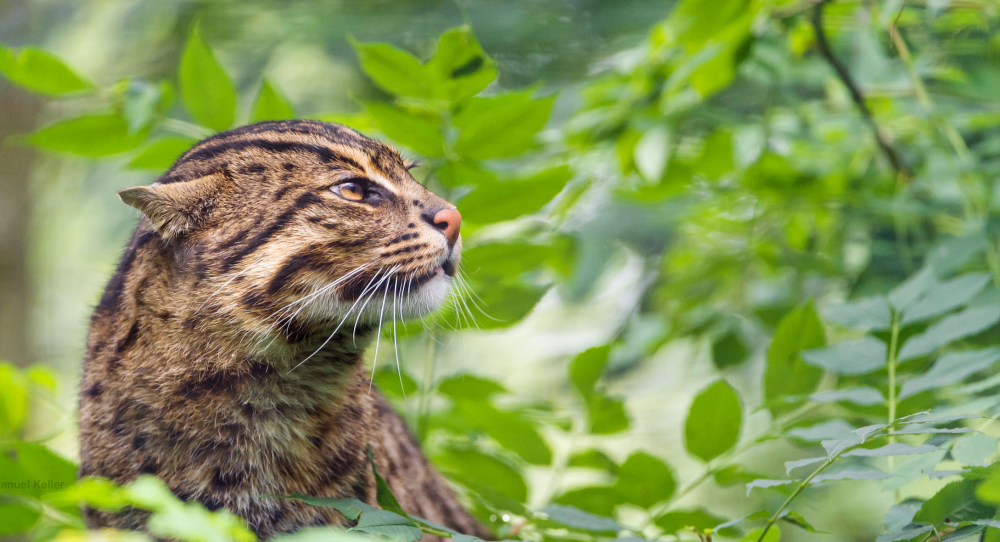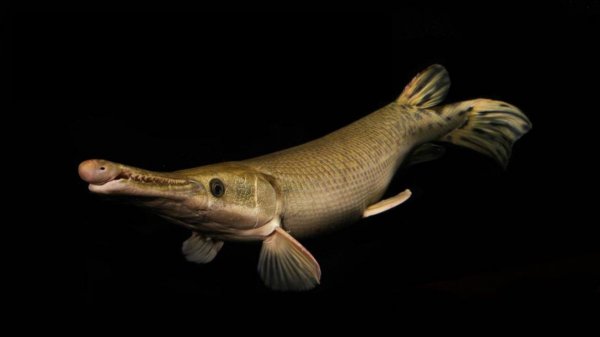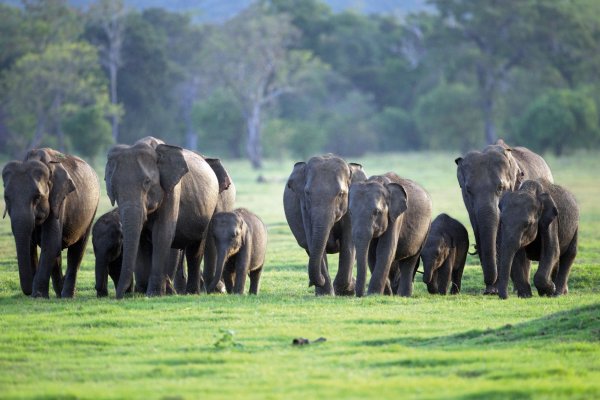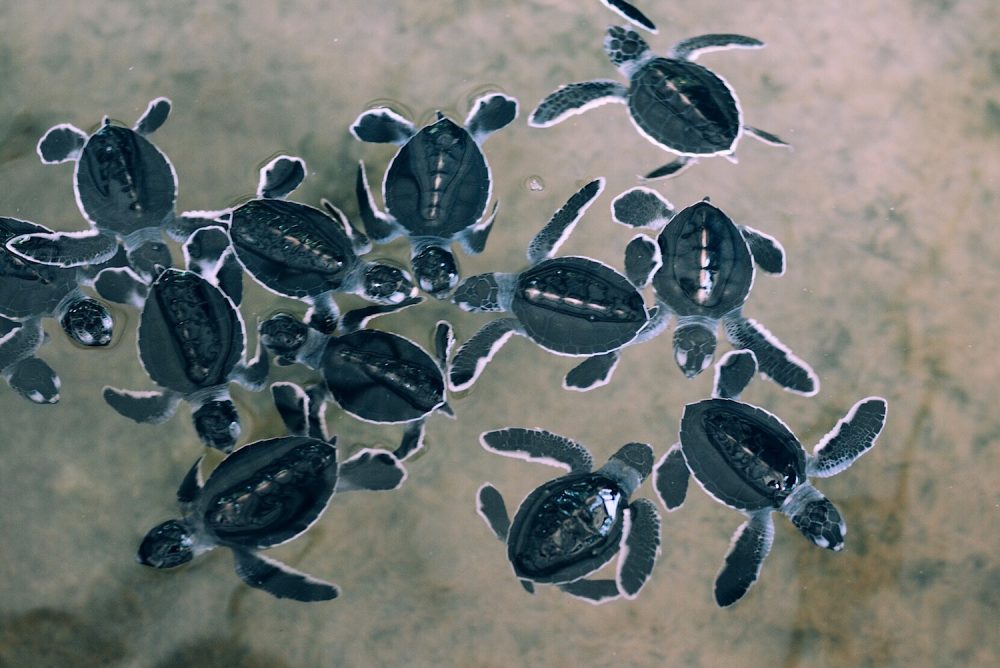
Of the seven species of sea turtle that grace the world’s oceans, five of them – the Loggerhead Turtle, Leatherback Turtle, Olive Ridley Turtle, Green Turtle, and Hawksbill Turtle – embrace the shores of Sri Lanka as part of their nesting grounds.
The conservation statuses of these five species range from vulnerable to critically endangered, and this positions the island as an indispensable player in the turtle conservation effort. But how exactly do we go about fulfilling this role?
Are Hatcheries The Answer?
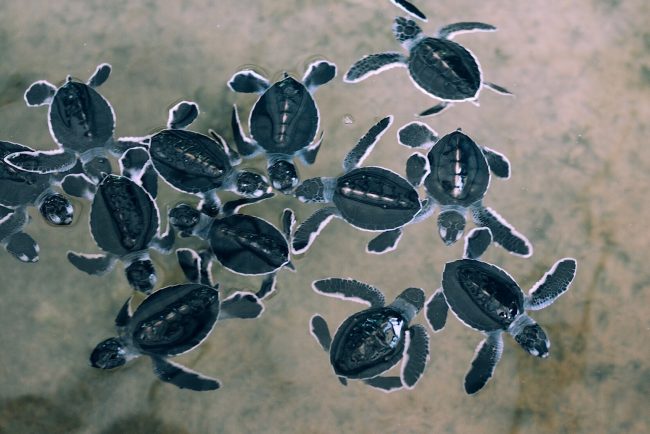
Confinement in tanks for too long may drastically decrease the chances of survival for these hatchlings. Image credit: Roar.lk/Minaali Haputantri
Perhaps the most unfortunate thing about the distribution of sea turtle nesting grounds in Sri Lanka is that they are concentrated in the island’s Western, South-Western, and Southern coasts, where human population density is high.
This has made it near-impossible for the government to establish marine reserves for the protection of sea turtles, and the only protection offered to turtle nesting grounds is when they are encompassed by other, larger wildlife reserves, such as Wilpattu and Yala.
This lack of specially established marine reserves means that, despite the existence of legislation looking to protect sea turtles – such as the Fauna and Flora Protection Ordinance of 1938 that makes it an offence to “capture, kill, injure, or possess [sea turtles] or their eggs” – the exploitation of sea turtles and their eggs by poachers and careless locals continues on a daily basis.
As a result, it is turtle hatcheries that have long been the face of the turtle conservation effort in the country, but since the establishment of the country’s very first sea turtle hatchery by the Wildlife and Nature Protection Society of Sri Lanka at Yala National Park in 1956, the private establishments have not been without their critics – and for good reason, as there are strong indications that at least some of these establishments are doing more harm than good.
In the absence of a plausible alternative, however, it is difficult to ignore the potential in these establishments, and there is reason to believe that turtle hatcheries, if they are properly regulated, could function as the collective backbone of the turtle conservation effort in Sri Lanka.
The Good, The Bad, And The Better Than Nothing
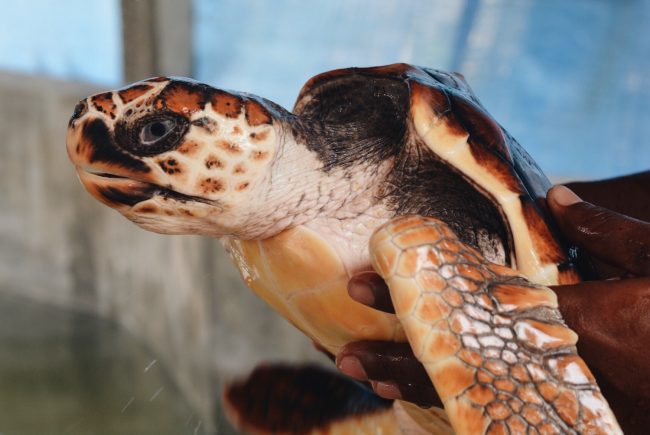
Hatcheries allow people to get up close and personal with these otherwise elusive animals. Image credit: Roar.lk/Minaali Haputantri
The main issue with turtle hatcheries arises when the operation is more of a tourist trap than a bona fide conservation effort, with the focus being on making money at the cost of the well-being of the animals.
As marine biologist Lalith Ekanayake points out, a significant number of hatcheries exploit newly hatched turtles to attract more tourists, by allowing visitors to handle them, and overcrowding tanks to the point where the turtles could harm each other. According to him, turtles, once hatched, possess a limited amount of energy that allows them to swim into the deep sea and away from predators and other threats to their survival. This means that confinement in tanks for even a few days would, inevitably, result in their expending that energy, and, therefore, being unable to make the all important journey to the deep sea upon their release.
Environmental lawyer Jagath Gunawardena, speaking to Roar, echoed these thoughts, and pointed out further that the lack of uniform regulations has resulted in privately owned hatcheries being a law unto themselves, often operating for the sake of money and not conservation.
But not every hatchery is a tourist trap doing more harm than good, and a number of hatcheries, though run for the dual purposes of profit-making and conservation, do make indispensable contributions to the turtle conservation effort.
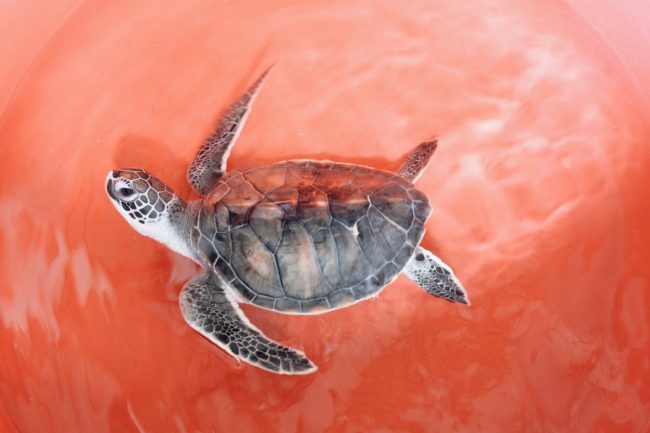
A partially paralysed turtle swims in place. Image credit: Roar.lk/Minaali Haputantri
In fact, some of the hatcheries that dot the coast, though privately run, are monitored by the Department of Wildlife Conservation, which makes regular visits to ensure that the operation is being run in a suitable manner.
In this encouragement given to turtle hatcheries by the Department of Wildlife Conservation is implicit the undisputable fact that these privately-owned establishments are at the forefront of the turtle conservation effort in Sri Lanka, performing a number of key tasks.
Perhaps the most important function of any given turtle hatchery is that it works to control and intercept poachers and predators in a given geographical area. The nature of turtles and their specific nesting grounds means that it is impossible to have a centralised conservation effort – it is important that the hatchlings are released close to the original location of the nest. Therefore, by getting to the nests before poachers and predators, and seeing the eggs through, hatcheries are ensuring that the hatchlings are given at least a shot at survival.
Also important is the role hatcheries play in looking after less fortunate sea turtles, who wouldn’t survive more than a couple of weeks in the wild – some turtles are born deformed or paralysed, while others are left incapacitated by human actions. It may, of course, be argued that conservation should focus on healthy specimens, but the threatened nature of the various species of turtle that nest in Sri Lanka renders each and every individual specimen important, and so the work done by hatcheries in this regard is equally important to the conservation effort.
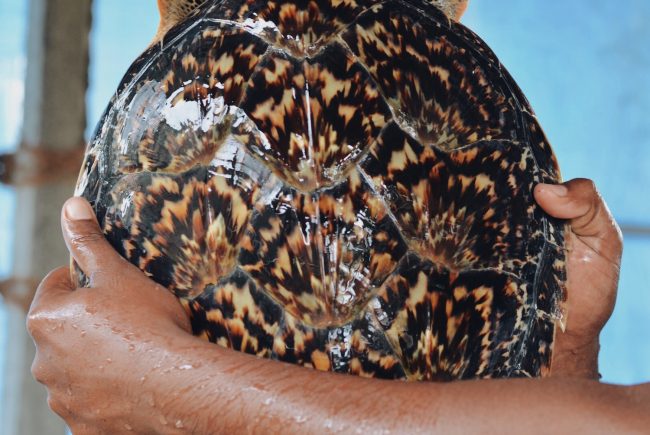
The shell of the Hawksbill Turtle is used to make tortoiseshell products. Image credit: Roar.lk/Minaali Haputantri
Finally, hatcheries, by allowing visitors to observe and, sometimes, interact with these otherwise elusive creatures in all stages of their development, encourage public awareness towards the conservation effort, and help curb harmful human activities. For example, a visitor observing the beautiful hawksbill turtle will probably be dismayed to know that tortoiseshell products are made by killing the animal for its shell.
A Day In The Life Of A Hatchery
The Urawatta Sea Turtle Hatchery in Ambalangoda is a small, family-owned establishment, whose interests, like that of most hatcheries, are twofold – tourism and conservation.
Rohan and Suranga, who take care of the day-to-day activities of the hatchery, are well acquainted not only with sea turtle care in general, but also each and every turtle that lives with them beyond a couple of days.
The daily routine at the hatchery is a hectic one, beginning at the crack of dawn, when the caretakers secure the day’s food for the animals. Most days, they tell us, they do so under debt, as the animals often require more food than the hatchery can afford… at least until the visitors come in.
The rest of the morning is usually spent feeding the turtles and, much like the rest of the day, conducting tours of the hatchery whenever visitors turn up. The caretakers are also the ones who locate and retrieve eggs from turtle nests in the area, as well as construct artificial nests for them.
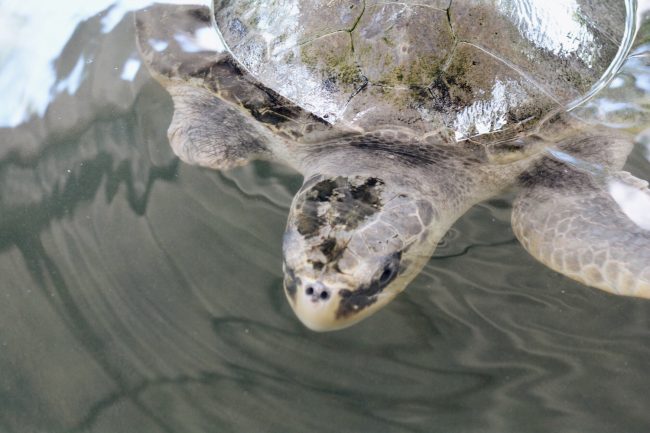
Urawatta Hatchery is home to many a disabled turtle. Image credit: Roar.lk/Minaali Haputantri
In addition to the daily routine, the caretakers will, every week or so, change the water in the turtle tanks – or do so more often, when necessary. Sometimes, the shells of some of the older turtles will require a good scrubbing and cleaning, as living in a tank means that they are deprived of the fish who usually clean off algae in the wild.
This hatchery is unique in that the Department of Wildlife Conservation has allowed them to retain the female hatchlings and rear them until they are four years old. This is because 90% of the turtles that hatch on Sri Lankan shores are male, which makes it necessary for hatcheries like this one to give their female hatchlings a greater chance at survival.
Urawatta is also home to quite a few disabled turtles, like the partially paralysed turtles who swim in circles in shallow tanks, turtles who have severed fins, and one turtle who – due to having consumed plastic in the ocean – has an air bubble between it’s back and its shell that makes it impossible for it to go underwater.
While the establishment is not without its faults – the retention of hatchlings for too long, for example, occurs here as well as in a lot of the other places – there is no disputing the fact that the Urawatta Turtle Hatchery does a lot of good and, perhaps more importantly, has the capacity to do a lot more.

An air bubble prevents this turtle from staying underwater. Credit: Roar.lk/Christian Hutter
As the situation now stands, privately owned turtle hatcheries, while doing some harm in pursuit of higher patronage, also have the potential to become indispensable players in the turtle conservation effort. As environmental lawyer Jagath Gunawardena points out, however, this can only be achieved through legal reformation and the laying down of more restrictive regulations, which will provide a framework for the hatcheries to do the work that other bodies do not, and perhaps cannot, do.
